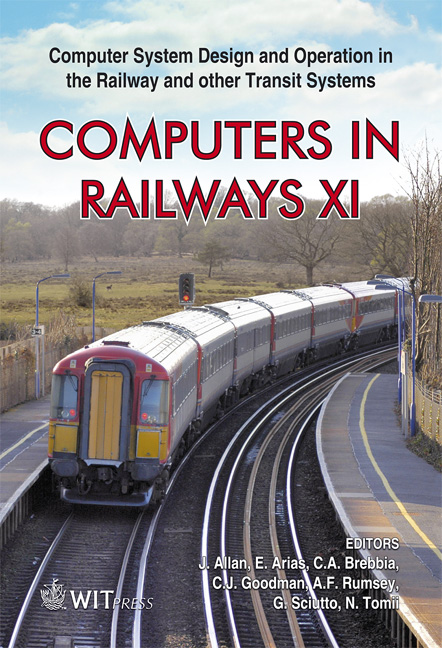A Discrete Time Markov Chain Approach To Global Risk Analysis In Railway Transportation
Price
Free (open access)
Transaction
Volume
103
Pages
9
Page Range
123 - 131
Published
2008
Size
937 kb
Paper DOI
10.2495/CR080131
Copyright
WIT Press
Author(s)
P. Cesario, N. Sacco & M. Sciutto
Abstract
Since the earliest days of railways, as traffic was increasing, there has been the need for developing safety devices and procedures with the aim of avoiding or, at least, minimising the likelihood of circulation hazards and their consequences. In this framework, since railways are large and distributed transportation systems, characterised by a high and heterogeneous technological level and by great infrastructure complexity, the problem of assessing the risk is very difficult to cope with. Then, in this paper, the main characteristics of the SIGLO project, defining an analysis process assess risk is described. Keywords: railway safety, risk analysis, Discrete Time Markov Chain. 1 Introduction Since the earliest days of railways, as traffic was increasing, there has been the need for developing safety devices and procedures with the aim of avoiding or, at least, minimising the likelihood of circulation hazards and their consequences. In this framework, in the last years the EuropeanUnion (EU) has begun to address the railways safety problem by promoting quantitative methodologies for safety level evaluation, and by introducing ad-hoc norms (see, for instance [1] for a detailed description of the point of view of the EU on the safety problem). Then, while in the past the scope of reducing consequences of accidents has been achieved by designing more robust rolling stocks, the challenge of minimising the accident frequency has been mainly faced by continuously introducing new technological devices and \“behavioural norms” which ensure an high safety standard. In this
Keywords
railway safety, risk analysis, Discrete Time Markov Chain.





